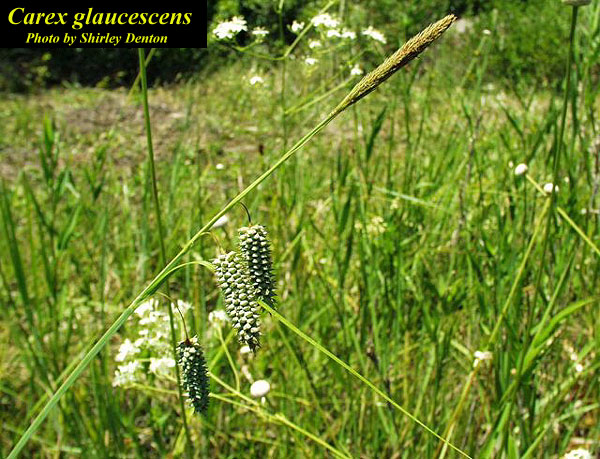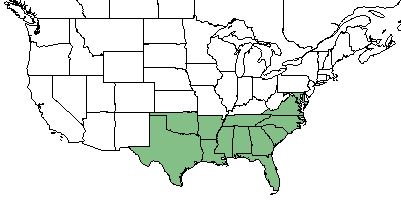Difference between revisions of "Carex glaucescens"
(→Description) |
(→Ecology) |
||
| Line 31: | Line 31: | ||
==Ecology== | ==Ecology== | ||
===Habitat=== <!--Natural communities, human disturbed habitats, topography, hydrology, soils, light, fire regime requirements for removal of competition, etc.--> | ===Habitat=== <!--Natural communities, human disturbed habitats, topography, hydrology, soils, light, fire regime requirements for removal of competition, etc.--> | ||
| − | <!--===Phenology===--> <!--Timing off flowering, fruiting, seed dispersal, and environmental triggers. Cite PanFlora website if appropriate: http://www.gilnelson.com/PanFlora/ --> | + | <!--===Phenology===--> |
| + | The timing of flowering events for ''C. glaucescens'' is predominantly in July, with some instances of earlier and later flowering during the rest of the summer months. <ref name= "Pan Flora"> [http://www.gilnelson.com/PanFlora/ Pan Flora]</ref> | ||
| + | <!--Timing off flowering, fruiting, seed dispersal, and environmental triggers. Cite PanFlora website if appropriate: http://www.gilnelson.com/PanFlora/ --> | ||
<!--===Seed dispersal===--> | <!--===Seed dispersal===--> | ||
<!--===Seed bank and germination===--> | <!--===Seed bank and germination===--> | ||
Revision as of 12:13, 17 May 2018
| Carex glaucescens | |
|---|---|

| |
| Photo by the Atlas of Florida Plants Database | |
| Scientific classification | |
| Kingdom: | Plantae |
| Division: | Magnoliophyta - Flowering plants |
| Class: | Liliopsida - Moncots |
| Order: | Cyperales |
| Family: | Cyperaceae |
| Genus: | Carex |
| Species: | C. glaucescens |
| Binomial name | |
| Carex glaucescens Elliot | |

| |
| Natural range of Carex glaucescens from USDA NRCS Plants Database. | |
Contents
Taxonomic Notes
Synonyms:none
Varieties:none
Description
C. glaucescens is a perennial graminoid in the Cyperaceaea family that is native to North America. [1]
Distribution
C. glaucescens is found in the southeastern United States. [1]
Ecology
Habitat
The timing of flowering events for C. glaucescens is predominantly in July, with some instances of earlier and later flowering during the rest of the summer months. [2]